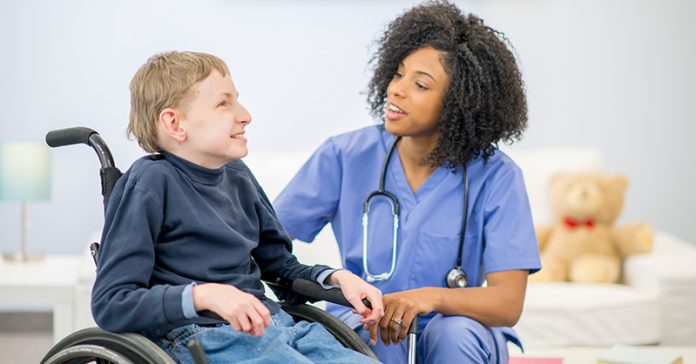Rehabilitation medicine uses many kinds of assistance, therapies, and devices to improve function. The type of rehabilitation a person receives depends on the condition causing impairment, the bodily function that is affected, and the severity of the impairment.
The following are some common types of rehabilitation:1, 2, 3, 4, 5
- Cognitive rehabilitation therapy involves relearning or improving skills, such as thinking, learning, memory, planning, and decision making that may have been lost or affected by brain injury.
- Occupational therapy helps a person carry out daily life tasks and activities in the home, workplace, and community.
- Pharmacorehabilitation involves the use of drugs to improve or restore physical or mental function.
- Physical therapy involves activities and exercises to improve the body’s movements, sensations, strength, and balance.
- Rehabilitative/assistive technology refers to tools, equipment, and products that help people with disabilities move and function. This technology includes (but is not limited to):
- Orthotics, which are devices that aim to improve movement and prevent contracture in the upper and lower limbs. For instance, pads inserted into a shoe, specially fitted shoes, or ankle or leg braces can improve a person’s ability to walk. Hand splints and arm braces can help the upper limbs remain supple and unclenched after a spinal cord injury.
- Prosthetics, which are devices designed to replace a missing body part, such as an artificial limb
- Wheelchairs, walkers, crutches, and other mobility aids
- Augmentative/Alternative Communication (AAC) devices, which aim to either make a person’s communication more understandable or take the place of a communication method. They can include electronic devices, speech-generating devices, and picture boards.
- Hearing aids and cochlear implants
- Retinal prostheses, which can restore useful vision in cases in which it has been lost due to certain degenerative eye conditions
- Telemedicine and telerehab technologies, which are devices or software to deliver care or monitor conditions in the home or community
- Rehabilitation robotics
- Mobile apps to assist with speech/communication, anxiety/stress, memory, and other functions or symptoms6
- Recreational therapy helps improve symptoms and social and emotional well-being through arts and crafts, games, relaxation training, and animal-assisted therapy.
- Speech and language therapy aims to improve impaired swallowing and movement of the mouth and tongue, as well as difficulties with the voice, language, and talking.
- Surgery includes procedures to correct a misaligned limb or to release a constricted muscle, skin grafts for burns, insertion of chips into the brain to assist with limb or prosthetic movement, and placement of skull plates or bone pins.
- Vocational rehabilitation aids in building skills for going to school or working at a job.
- Music or art therapy can specifically aid in helping people express emotion, in cognitive development, or in helping to develop social connectedness.7
These services are provided by a number of different healthcare providers and specialists, including (but not limited to):
- Physiatrists (also called rehabilitation physicians)
- Occupational therapists
- Physical therapists
- Cognitive rehabilitation therapists
- Gait and clinical movement specialist
- Rehabilitation technologists
- Speech therapists
- Audiologists
- Orthopedists/surgeons
- Neurologists
- Psychiatrists/psychologists
- Biomedical engineers
- Rehabilitation engineers


